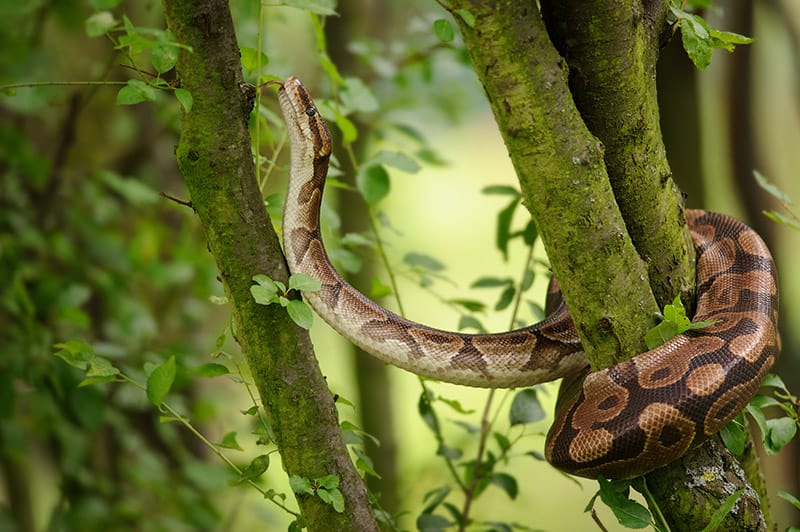The best amphibian and reptile pets are those that get great care… and it starts here!
There are all sorts of reptiles and amphibians that make great pets, including snakes, frogs, turtles, lizards, and more. Some herps are very colorful, others are full of antics. There is such a large variety of these fascinating creatures to choose from, that anyone can find a perfect pet.
What Are Herptiles? Reptiles and amphibians are collectively known as herptiles. Herptiles are animals that are ectothermic, which means they cannot regulate their body temperatures.
In nature, each animal has adapted to the conditions of the environment in which it lives. For example, in areas where the climate gets real dry, animals such as the hingeback tortoise and some toads, will burrow down into the ground and wait to emerge in the next rainy season. In areas where the temperature drops, often accompanied by a decline in food sources, many herptiles have adapted by hibernating.
One main difference between a reptile and amphibian is that amphibians have lungs, but they also breathe through their skin. Because it takes a lot of skin to support their bodies, they have adapted by staying small so they have less to support. Reptiles on the other hand, use only lungs for breathing.
Learn about your pet reptile or amphibian, its behaviors, and its needs to make the most of your enjoyment with it. When you know about the type of pet you are getting, then you will know what to expect and what to do. This will maximize your enjoyment, as well as the life and health of your pet.
- To keep Scorpions, Tarantulas, and other Arthropods, see: Land Invertebrate Care: Keeping Arachnids and Other Arthropods as Pets
Reptiles and Amphibians as Pets
Reptiles and amphibians make ideal pets in many ways. Both types of herptiles are very quiet and have virtually no odor. The space needed to house can be an area smaller than a flower pot or as large as a room, depending on the pet. Terrariums decorated with driftwood, plants, mosses, and rocks, will bring a also bring a bit of nature into your home and can make a great showpiece in the family or living room.
You can find a suitable reptile or amphibian for a pet whether you live in a dorm room, an apartment, or in a house.
Reptiles and amphibians are easy to take care of with a minimum amount of cleaning. You can even miss a feeding occasionally and not worry about it. In nature, herptiles don’t get to eat constantly. They have to be much more active in collecting their food in the wild, than they do in captivity. Becoming obese can actually be a problem if they are fed daily.
Top 10 Reptile Pet Tips
- Learn about different reptiles and amphibians to be sure you get a herptile that will fit you and your lifestyle.
- Reptiles fall into three categories: handleable, semi-handleable, and visual. Decide which type you are interested in, then you won’t be disappointed.
For example, a tokay gecko is extremely gorgeous, but it always bites… and it always will bite! - If you know about the type of herptile you are getting, then you will know what to expect!
- Be sure you are prepared to deal with feeding and cleaning requirements.
- Check on your pet everyday. This will keep you aware of what’s going on with your herptile and you’ll know if anything needs to be fixed or changed.
- Don’t handle amphibians with dry hands, or you might damage their sensitive skin.
- Don’t let your pet get cold.
- Be sure it is safe to take your herptile out of its cage. If it’s scared, be prepared for flight.
- Don’t leave any windows or doors open unless you’re sure it won’t take off.
- Keep your pet safe and have fun enjoying this fascinating world of intriguing pets!
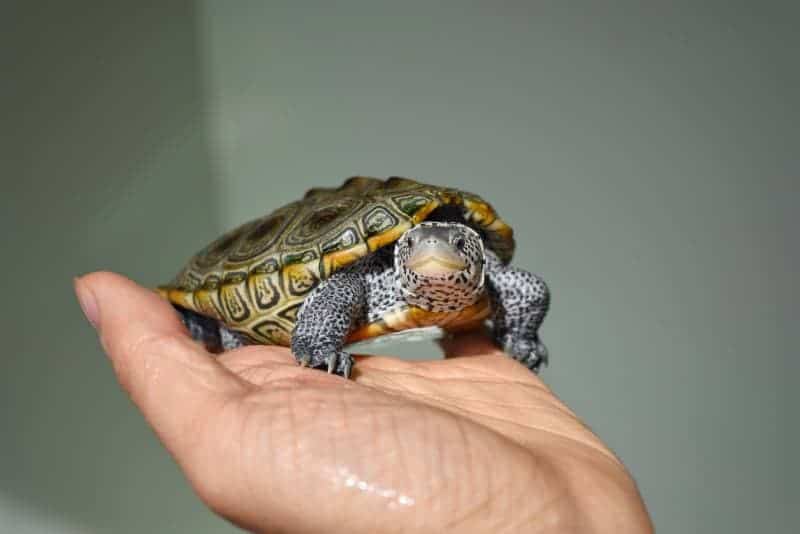
About Reptile Cages
The cage or enclosure to house your pet will be determined by the size of the reptile and its environmental needs. Housing for large reptiles can be accomplished with various types of cages. or even room sized habitats. For smaller pets, many different types of terrariums can be set up.
The shape of the cage too, must suit the needs of the pet that you will put in it. For example, a tall narrow cage with a climbing branch is needed for an arboreal or tree dwelling animal, such as a chameleon. Whereas a low, wide cage is needed for a roving terrestrial or ground dwelling animal, such as a tortoise.
Many commercially available reptile cages are pre-made glass terrariums or you can simply get an aquarium and a screen cover. Wooden cages with glass fronts are sometimes available as well, or they can be built. When the weather permits, some reptiles can simply be housed in a backyard enclosure or a pond area. Some people will even create elaborate indoor setups for their pet reptile, like an indoor atrium.
Tips for choosing reptile cages
- House your pets by their size and their kind.
- Only mix your pets if they are known to be compatible.
- Reptile cage requirements:
- Escape proof
- Draft Proof
- Moisture resistant
- Heat resistant
- Well-lighted
- Largest size possible
Reptiles with special cage considerations:
- green iguanas – they get to be four to six feet long
- various boas and pythons – some get over 20 feet long
- king snakes and corn snakes.
- pet tortoises
- various turtles
- chameleons
- various monitors and tegus
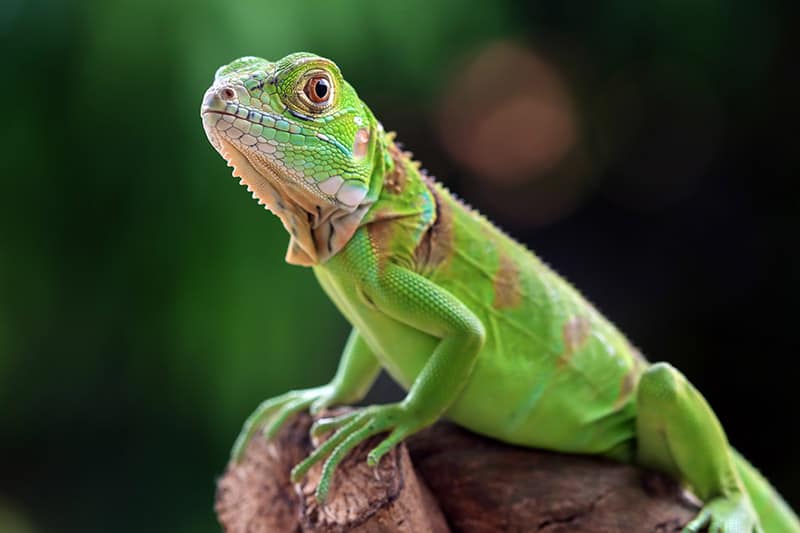
Types of Terrariums
The types of reptile cages and habitats are limited only to your imagination and being suitable for the type of reptile you have. There are four basic habitats for herptiles, which include:
Aquatic Terrarium
Some animals that are suited to an aquatic terrarium are turtles, frogs, newts, rubber eels, water snakes, mudpuppies, waterdogs and salamanders.
The aquatic terrarium is like an aquarium. You need water, a submersible heater, usually gravel is spread on the bottom, and a filter is nice to make maintenance less work. It differs slightly from an aquarium by the decor you use, the lid or covering used on the top, and the amount of water needed (generally 4 to 6 inches) for the animal that will live there.
Terrarium supplies:
- First you will need a vented or wire screen top. This allows air to circulate through the terrarium as well as giving you a place set a basking lamp.
- Next a basking area is usually needed. It can either be a floating type such as an artificial lily pad or a slab of bark, or it can be a built up area of rocks and moss.
- Then you will want a background. This is important not only to provide a naturally looking setting, but to help your pet feel secure and comfortable.
Semi-Aquatic Terrarium
Some animals that are suited to the semi-aquatic terrarium are most of the various salamanders, frogs, and newts. Also crocodile lizards, caimans, basilisks, and several turtle types.
A semi-aquatic terrarium is a combination of water and land. The land and water areas can be divided with a piece of glass attached and sealed with silicon, or a removable container can be used for the water area.
Terrarium supplies:
- The water area can be set up like the aquatic terrarium with a heater, gravel and filter.
- The land area can be filled with substrates such as: sphagnum moss, cypress bark, loam, potting soil, or small gravel. A layer of charcoal covered with filter floss placed under the substrate helps keep it fresh.
- Decorate the terrarium with driftwood, moss, rocks and plants. Plants can be added to the land area by planting them directly into the substrate or by submersing pots into the substrate. Pick plants whose size fits the animal and terrarium size; for example, ferns are great for tree frogs while pray plants are good for moderate sized lizards.
- Depending on the inhabitant you may need to provide a heat source that provides a basking area. Make sure there is a thermal gradient to the enclosure, with the basking source at one end while the other end is cooler.
Woodland Terrarium
The woodland terrarium can house various frogs including red-eyed tree frogs, barking tree frogs, green tree frogs and true frogs; also various salamanders, day geckos, anoles, skinks, and snakes.
The woodland terrarium is set up just like the semi-aquatic terrarium only without the large water area. Simply provide a water bowl.
Terrarium supplies:
- This terrarium is all substrate with plants, driftwood, moss and rocks.
- Depending on the type of animal you will house here, substrates can be: sphagnum moss, cypress bark, loam, potting soil, and even reptile carpet or small gravel.
- The pets you wish to keep in it will also determine if it should be planted, and how heavily it should be planted; whether you will have more branches for tree climbers or more rocks for ground dwellers.
- Plants such as philodendrons, syngoniums, fittonias, and other greenhouse varieties can work well in these terrariums. Various “air plants” such as tillandsia work great, too. They are real low maintenance, they can be attached to driftwood and will do well just being misted a couple of times a week.
- You may need to provide a heat source, depending on the inhabitant, but make sure there is a thermal gradient to the enclosure, generally one end that is warmer while cooler on the other end. This allows your reptile to thermoregulate as it needs to. Full-spectrum lighting is also important for some of the woodland types.
Desert Terrarium
Some pets that will do very well in the desert terrarium are: chuckwallas, desert iguanas, collared lizards, swifts, fat-tailed and leopard geckos, spiny lizards, fence lizards, and alligator lizards. A desert terrarium is just what it’s name implies, an arid or semi-arid environment.
Terrarium supplies:
- Good substrates for this terrarium includes reptile bark, terrarium carpet or sand.
- Plants need be able to handle low humidity and be drought tolerant, such as cactus and succulents.
- You will need to provide a heat source but make sure there is a thermal gradient to the enclosure, generally one end that is warmer while cooler on the other end. This allows your reptile to thermoregulate as it needs to. Full-spectrum lighting is also important for most of the desert types.
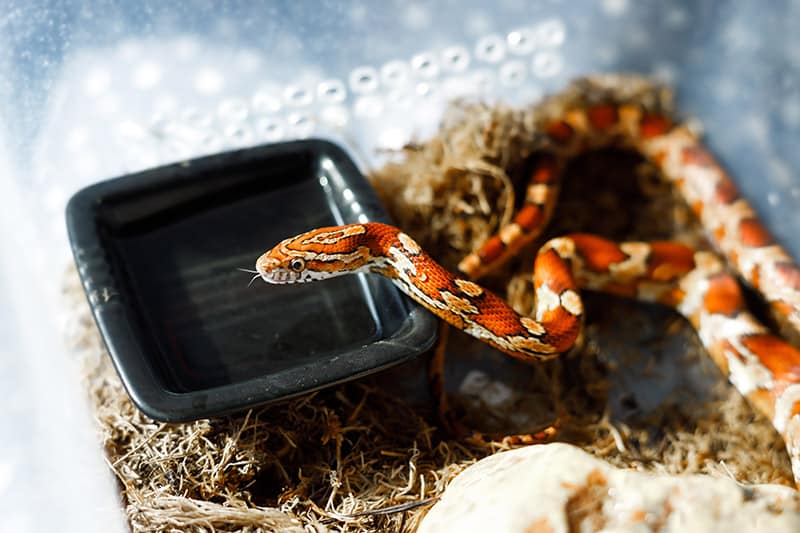
Terrarium Supplies
The housing requirements for most cages and terrariums consist of four basic elements; heating, lighting, floor covering, decor and cleaning. The reptile supplies for these elements sometimes overlap. An example is lighting, where a full-spectrum incandescent bulb will provide heat for all reptiles. It will also provide adequate lighting for some reptiles though not all. It is not an adequate full-spectrum lighting for lizards such as the iguana or the sun lizard.
Heating
Heating your terrarium can be accomplished by using one or more methods or devices in order to provide the optimum environment for the herptile you are housing. For many species it is often best to provide heating in a manner that offers a thermal gradient to the enclosure, that is to say, warmer on one end and cooler on the other.
Heating can be provided in several ways: basking lamps, ceramic heating elements, under tank heat sources, central heating for the entire building, or space heaters used only in the reptile’s room. Heating devices kept outside the enclosure will prevent accidental burns. Hot rocks should be avoided or used very carefully and only as a secondary or supplementary heat source (see more about them below)
- Thermometer
It is important to have a wide-range thermometer mounted on your terrarium so that you can monitor the temperature and make sure it is appropriate for the herps you will be housing. Using two thermometers, one on each end, will give a better indication of the thermal gradient of the enclosure (warm to cool). - Basking lamps
Basking lamps can be mounted at the top, usually outside the wire top of the cage. You don’t want your pet to be able to touch the lamp as it can get burnt. The lamp provides a heat source through a full-spectrum bulb during the daytime and a red frosted bulb or a “blacklight” bulb for night. The light in these nighttime bulbs cannot be seen by your pet (though you can still see it), so they think it’s dark out. - Ceramic heating elements
Ceramic heating elements do not provide light but produce a lot of heat. They screw into a fixture just like a light bulb but due to the extreme heat must only be used in a fixture with a ceramic socket. This fixture can be mounted on top of terrarium in a manner similar to a basking lamp. - Under tank heaters
Under tank heat sources such as heating pads or tapes are a good choice for supplementing heat provided by a basking light or to provide heat at night. - Hot rocks
Hot rocks should generally be avoided as they can get quite warm or even have hot spots. They don’t help with heating the whole terrarium and can burn a reptile resting on one, causing injury and sometimes even death.
With newer technology today, there are hot rocks available that have been developed to prevent the problems of over-heating and hot spots. They have controlled heating elements for setting the desired temperature and thermal conductive resins that cover the stone for even heat distribution.
However, these thermal controlled hot rocks still provide heat only on the rock, so they don’t solve the problem of adequately heating the whole terrarium, and as such are not suitable for large lizards or snakes.
Lighting
Lighting can be provided in two ways, through a full-spectrum incandescent in a basking lamp discussed above and/or through full-spectrum fluorescent lamps. These specialty bulbs are available through pet stores that sell reptiles.
- Incandescent bulbs
A full-spectrum incandescent bulb provides heat as well as light. These can be mounted as a basking lamp. They are fine for many lizards, but for lizards that require natural sunlight, it is not adequate. These must have fluorescent lighting. - Fluorescent bulbs
A full-spectrum fluorescent bulb provides a sunlight replacement for those pets that need full-spectrum lighting. Not all require this, but those that do will be at risk if they don’t get it. These include many diurnal, or day-time active lizards and tortoises. Of course, natural sunlight is the best source of full-spectrum lighting.
Flooring Covering
There are a variety of floor coverings that can be used for your pet, but they all have their own considerations. One of the primary considerations in choosing floor coverings is cleanliness. Be wary of harmful micro-organisms.
- Reptile cage carpets
Reptile cage carpets are often an ideal floor covering. They are made for your pet, not for human floors, so they are not abrasive to your pets skin. They are also easy to remove and clean.
Note: Household carpets are not made for reptiles, they are chemically treated and are designed for abrasion. - Reptile sand
Sand is sometimes used, but it tends to cling to herptiles feet and to get into their food. It can be very harmful if it is ingested. Gravel is a better choice, but should be washed and disinfected.
There is a calcium sand available that is said to be digestible, however is should be used with caution as impaction problems have been said to occur with some herps. - Other substrates
Other options are shredded barks and packaged peat mosses, but be mindful of cleanliness.
Cage Decor
Cage decor is very important for your pet. It provides their sense of security through shelters and camouflaging. It also includes maintenance things, like food and water dishes and heating devices. Some standard decor items are rocks, basking limbs and plants. Wash everything you put in.
- Sand or logs that you collect from outside needs to be cleaned and bleached or sterilized in a slow oven (120 degrees to 150 degrees) for two to three hours.
- Wood limbs and rocks are very natural additions, but make sure they don’t have any sharp parts that can injure your pet. Limbs can be sealed with polyurethane varnish to prevent places for parasites to live. These can be used in dry land or aquatic terrariums.
Plants and sphagnum moss make good hiding and/or camouflage places, an can also help provide humidity.. Aquarium plants, such as elodea (anacharis), can do well in aquatic terrariums.
- Live plants must fit the terrarium size and like the temperature and the lighting.
- Sphagnum moss kept wet helps keep the humidity up for those reptiles who need a high humidity environment.
- Plants in small pots help to contain the size and do make it easier to clean the terrarium.
- Tortoises and herbivorous lizards will eat live plants, so plastic plants do make a nice alternative.
- Various “air plants” such as tillandsia make real good terrarium plants. They can be grown on the climbing limbs and only need misting a couple times a week to thrive.
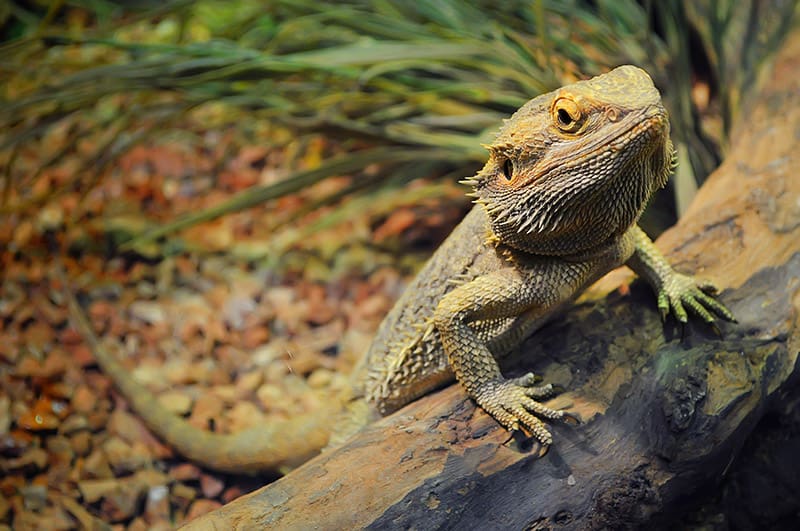
Herptile Cage Care
Cage maintenance is an important part of keeping reptiles and amphibians healthy, and long-lived. With most herptiles being kept in a confined area as pets, they need to be protected from harmful micro-organisms and parasites. The reptile cage also needs daily and weekly maintenance.
Things you will need to do for your herps home include:
- Herptiles appreciate fresh food and water in clean dishes everyday.
- Do a weekly cleaning of their home.
- Everything you put into their home should be washed and disinfected. This includes dishes, floor coverings, and cage decor.
- Never clean with a phenol such as Pine Sol. Chlorine and alcohol based cleaners are tolerated much better, but need to be thoroughly rinsed.
- Sand or logs that you collect from outside needs to be cleaned and bleached. You can also sterilized them in a slow oven (120 degrees to 150 degrees) for two to three hours.
- Wooden limbs can be sealed with polyurethane varnish to prevent places for parasites
Herptile Diet Types and Foods
Whether you are keeping reptiles or amphibians, the diet varies with each animal. Yet each herptile has primarily one of three types of diets. Some herps are carnivores – a meat or protein eater, others are herbivores – a plant eater or omnivores – which are animals that eat both plants and proteins.
Carnivores
Herptiles that are carnivores eat proteins such as rodents, insects and invertebrates. Other proteins include guppies, goldfish, eggs, and some birds. Some even eat other herptiles, for example a snake will eat a frog and a large lizard will eat a small lizard.
Some of the rodents herps will eat include mice, rats, pinkies and fuzzies (terms for baby and juvenile mice and rats), rabbits and chickens. These proteins form the basis of many snakes and some lizards diets. They can be fed live or purchased frozen and completely defrosted before feeding. Be cautious when feeding live adult rats. Snakes that do not feed immediately on an adult rat run the risk of being bitten by a loose rat, and can be severely damaged.
Reptile foods for carnivores include:
- Crickets – The most currently fed insects include crickets, which can be purchased in a variety of sizes to fit the herptile you are feeding.
- Mealworms – Another is mealworms. These are not really worms, but the larval state of the flour beetle. They are low in calcium, and so should be coated with a calcium supplement.
- Flies – Flies can be purchased as larva.
- Worms –Waxworms, butterworms, red worms, earthworms, and night crawlers also make good protein choices.
- Tiny proteins –Fruitflies, blackworms, bloodworms and tubifex worms are very tiny, so can be fed to aquatic frogs, toads and baby turtles
Herbivores
Herbivores tend to need large amounts of food and a good variety. Commercially prepared complete diets are available for iguanas, turtles and tortoises and should contain the necessary vitamins and minerals. Otherwise feed fresh foods with a vitamin and mineral supplement. Especially feed those foods high in fiber.
- Note: Spinach should not be fed as it binds up calcium internally, and renders it ineffective.
Reptile foods for herbivores include:
- parsley
- dandelion leaves
- cress
- lettuce – a little romaine lettuce rather than iceberg lettuce, as iceberg has little vitamin value
- escarole
- yellow vegetables
- fruits – a wide variety of fruits
- tomatoes are great for tortoises, but not for iguanas.
Note: Do not feed tomatoes to iguanas!
Omnivores
There probably are some vegetarian type herps that are truly omnivores throughout their lives, but most adult herbivores are true vegetarians.
Reptiles that are true herbivores as adults include Iguanas and several of the large tortoises such as the Sulcata or African Spurred Tortoise Geochelone sulcata. In captivity they may erroneously be offered a variety of items (such as insects and cat food) that are not natural in the wild diet. Many iguanas suffer early death because of this.
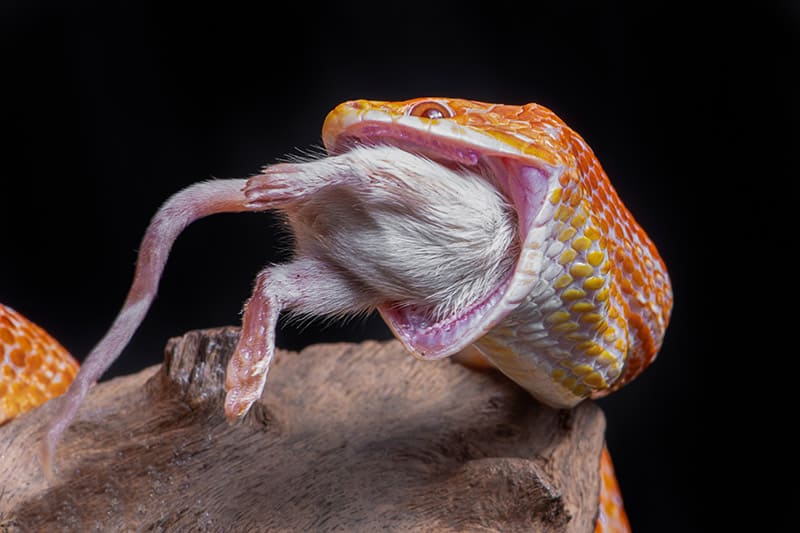
Feeding Reptiles and Amphibians
How to feeding reptiles and amphibians includes not only the food but also providing important supplements, the necessary lighting, and when to feed.
Supplements
No matter which type your pet or pets primarily are, it is a good idea to supplement all of their diets with a reptile vitamin and mineral supplement. You should find a good reptile vitamin and mineral supplement at most pet stores. Important reasons for supplements include:
- Skeletal growth
A calcium/phosphorus based mineral supplement is vital to fast growing reptiles skeletal growth and to prevent osteoporosis, it also helps prevent softening in turtles’ shells. - Stimulate appetite
Specially formulated vitamin supplements, some with vitamin B-12, are used to stimulate the appetite of reptiles that are not eating well and give them a quick energy boost if they are lethargic. - Aid in digestion
Gastric acid in some supplements helps aid food digestion. You should find a good reptile vitamin and mineral supplement at most pet stores.
- Skeletal growth
Lighting
Full-spectrum lighting is important in conjunction with supplements. The ultra violet rays in sunlight stimulate the synthesis of vitamin D-3. It is vital for some herptiles, especially iguanas, to bask in unfiltered sunlight or under a full-spectrum fluorescent light. This light helps them to absorb and utilize the stores of calcium and phosphorus in their bodies.
When to feed
Here’s some guidelines, but learn about your individual pet, as each herptile will have its own best schedule. Always supply you pets with fresh water in a clean bowl daily.
- Amphibians – Generally feed amphibians daily. Remove whatever they don’t eat in five to ten minutes.
- Other herptiles – Other herps do well with an occasional break from the routine of daily feeding, so take a day off every few days.
- Snakes that eat rodents – Rodent eating snakes can be fed about once a week.
Featured Image Credit: Stanislav Duben, Shutterstock
